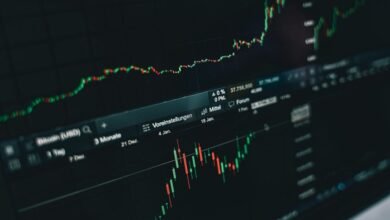Optimizing Financial Performance for Long-Term Impact 3271448144

Optimizing financial performance for long-term impact requires a comprehensive understanding of key financial metrics. Organizations must strategically leverage technology to enhance their financial operations and decision-making processes. By implementing continuous improvement strategies, companies can foster a culture of financial accountability among employees. This multifaceted approach not only supports immediate profitability but also sets the foundation for enduring success. However, the complexities of execution raise critical questions about effective implementation and measurable outcomes.
Understanding Key Financial Metrics
Financial acumen is essential for organizations striving to enhance their performance and achieve sustainable growth. Understanding key financial metrics, such as profit margins and cash flow, allows businesses to make informed decisions.
Profit margins indicate profitability efficiency, while cash flow analysis reveals liquidity health. Together, these metrics empower organizations to strategize effectively, optimize resources, and ultimately pursue greater financial freedom and stability.
Leveraging Technology for Financial Optimization
Harnessing innovative technology can significantly enhance financial optimization within organizations.
By utilizing advanced financial software and cloud solutions, companies can streamline expense management and budgeting tools.
Data analytics and predictive modeling further empower strategic decision-making, while automated reporting and financial dashboards provide real-time insights.
This integration of technology fosters a proactive approach, enabling organizations to achieve sustainable financial performance and long-term impact.
Strategies for Continuous Improvement
Continuous improvement strategies are essential for organizations aiming to enhance their financial performance over time.
Effective process evaluation identifies areas for enhancement, while performance benchmarking allows organizations to measure their progress against industry standards.
Building a Culture of Financial Accountability
While organizations strive for enhanced financial performance, establishing a culture of financial accountability is crucial for aligning individual behaviors with broader corporate goals.
Implementing robust accountability programs fosters financial literacy among employees, empowering them to make informed decisions.
This strategic approach not only enhances transparency but also encourages a sense of ownership, ultimately driving sustainable financial outcomes and fostering a resilient organizational framework.
Conclusion
In conclusion, optimizing financial performance for long-term impact requires a strategic approach that intertwines essential financial metrics with cutting-edge technology. By adopting continuous improvement strategies and fostering a culture of accountability, organizations can navigate the complexities of the economic landscape with agility. As the saying goes, “a stitch in time saves nine,” highlighting the necessity of proactive measures. Ultimately, these practices not only enhance liquidity and profitability but also position companies for sustained growth and resilience in the future.




